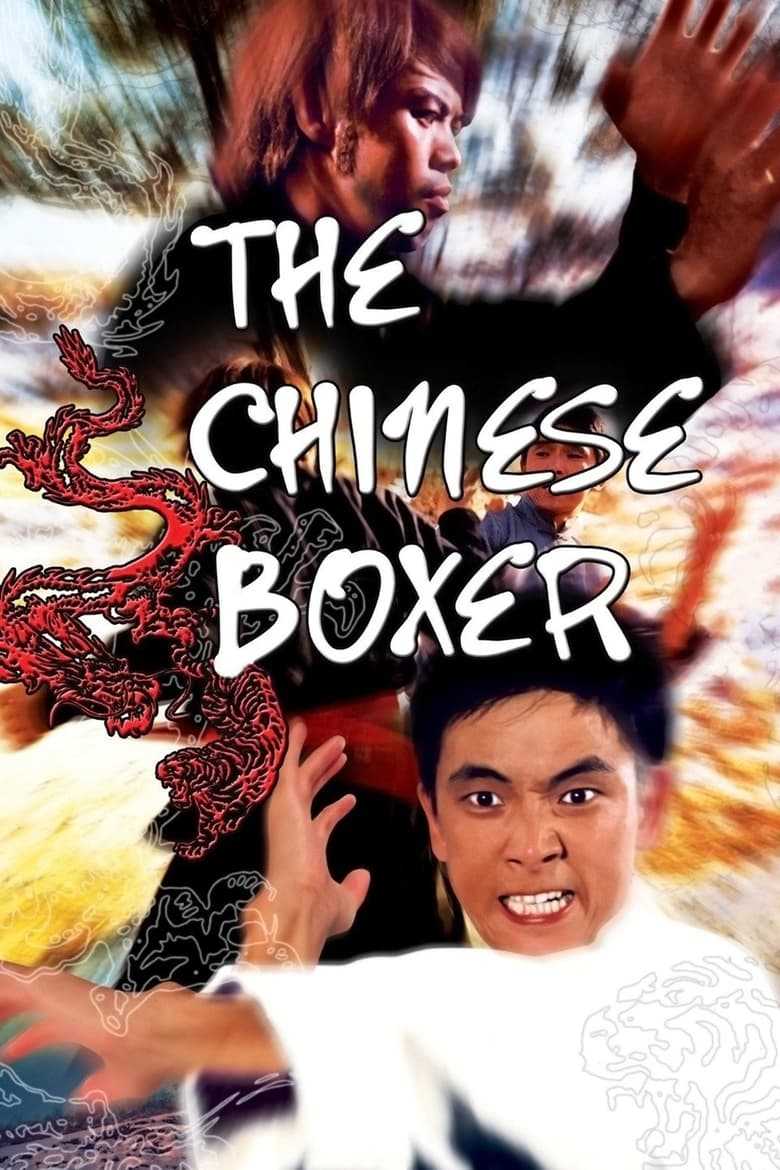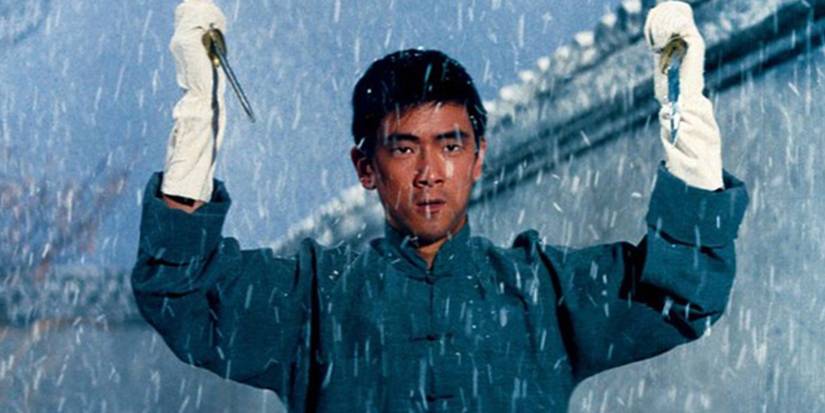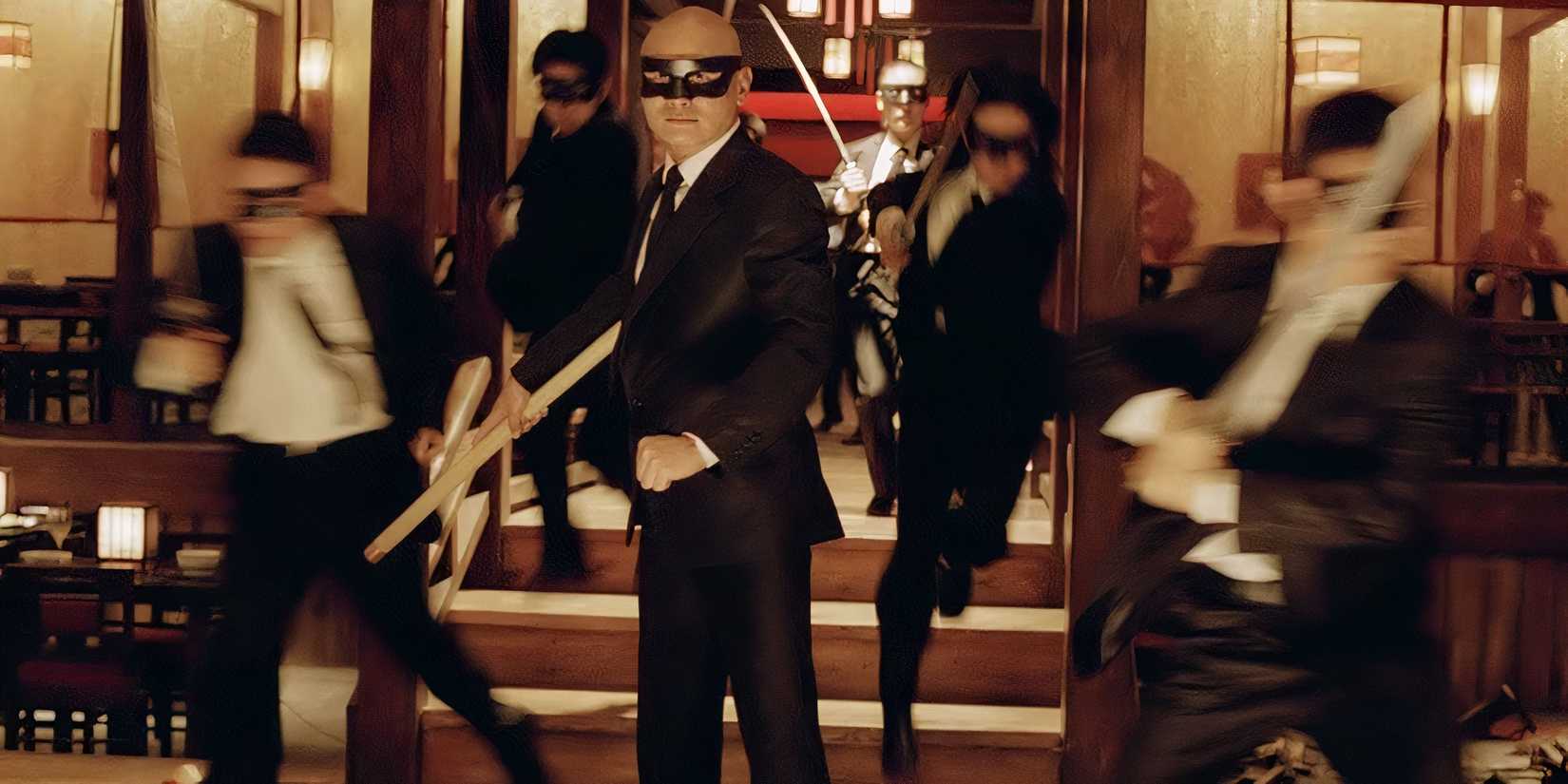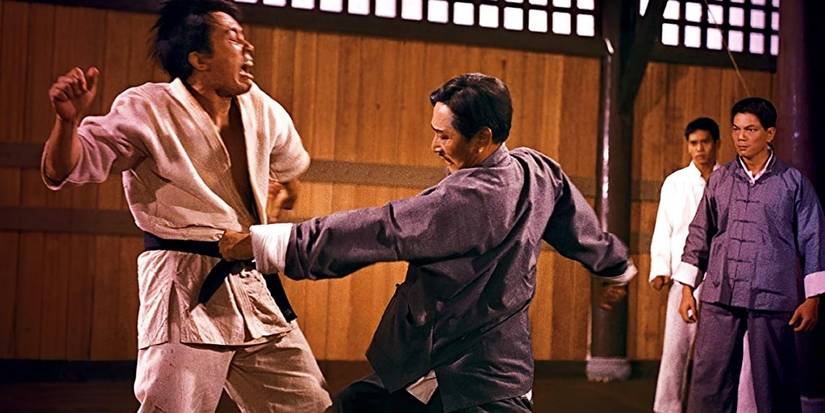A key fight sequence in The Chinese Boxer had a major influence on Quentin Tarantino, particularly in regards to his Kill Bill movies. Although Quentin Tarantino isn’t closely associated with the martial arts movie genre, he did make two of the best-known American martial arts films of the 21st century, Kill Bill Vol. 1 and Kill Bill Vol. 2.
Thus far, those two films are the only Quentin Tarantino movies that fit into the genre. Given what’s known about Tarantino, it’s a bit surprising that Tarantino hasn’t done more in the way of martial arts. After all, it’s no secret that Quentin Tarantino is a huge fan of kung fu movies, especially those made in the 1970s.
His love for those kinds of movies was made apparent by both Kill Bill Vol. 1 and Kill Bill Vol. 2, which feature some obvious tributes to classic kung fu cinema, specifically the movies made by Shaw Brothers, the most prominent martial arts movie studio in the 1970s and 1980s.
The Chinese Boxer Is One Of Quentin Tarantino’s Favorite Martial Arts Movies
In 2020, Quentin Tarantino appeared as a guest on the Pure Cinema Podcast, where he discussed his favorite kung fu movies. Among the many topics of discussion was The Chinese Boxer, a 1970 Shaw Brothers film and one of Jimmy Wang Yu’s best movies.
The Chinese Boxer featured a noteworthy action sequence where Jimmy Wang Yu’s character, previously defeated by the movie’s villains, enters a casino after undergoing some rigorous training. Having developed into a powerful fighter, Wang Yu’s Lei Ming faces off against a horde of enemies, beating them all with just pure kung fu talent and no weapons.
In addition to starring in The Chinese Boxer, Jimmy Wang Yu also wrote and directed the movie.
Tarantino lavished praise on The Chinese Boxer. Talking about large-scale fight scenes where the hero of a martial arts movie willingly enters the villain’s domain, Quentin Tarantino called Jimmy Wang Yu’s casino fight in The Chinese Boxer “the first” of its kind and, in his mind, the “best one ever done.”
The Chinese Boxer’s Casino Fight Was The Inspiration Behind A Key Part Of Kill Bill
According to Tarantino, when he was working on Kill Bill with action choreographer Yuen Woo-ping, he went over various clips from fight scenes from old movies to give an idea of what he wanted to do and what had inspired him. One of the fights he used as an example was The Chinese Boxer’s casino sequence.
When comparing The Chinese Boxer and Kill Bill, the former’s influence on Quentin Tarantino’s movie isn’t hard to spot. During the battle at the House of the Blue Leaves in the first Kill Bill movie, Uma Thurman’s character is shown standing quietly while dozens of armed opponents rush into the room, all eyes on her.
A mostly motionless standoff ensues as the camera pans to show her opponents, all while she waits for one of them to make the first move. This closely mirrors what happens in The Chinese Boxer; similarly, the casino battle opens with Jimmy Wang Yu sitting at a table when more than 30 men rush into the room, brandishing weapons.
The House of Blue Leaves fight includes another Shaw Brothers Easter egg. One of the fighters Uma Thurman’s character does battle with is Jimmy Mo, who is played by Gordon Liu, one of the studio’s top stars in the early 1980s.
The stillness of the characters as they await the beginning of the fight, how they surround him, and several of the camera shots are indicative of the lengths Quentin Tarantino went to in order to make the House of Blue Leaves fight emulate Jimmy Wang Yu’s best scene in The Chinese Boxer.
Why The Chinese Boxer Is One Of The Most Important Martial Arts Movies Ever Made
Of all the kung fu movies that Quentin Tarantino could look to for inspiration when making Kill Bill, there are few choices more poignant than The Chinese Boxer. After all, Jimmy Wang Yu’s directorial debut holds an important place in the history of the martial arts movie genre.
Before The Chinese Boxer, martial arts movies followed a very different formula. The action relied heavily on sword-fighting, and the battles were much shorter than what people expect today, with the main character usually winning in one stroke or two. That sort of approach is on display in movies like Come Drink with Me and another Jimmy Wang Yu classic, The One-Armed Swordsman.
Wang Yu succeeded in changing the game when he decided to make kung fu the focal point of the action in his 1970 film. After the movie’s tremendous success, dozens of films in the genre started to lean on hand-to-hand combat, giving rise to some of the best martial arts movies of all time, including Enter the Dragon and The 36th Chamber of Shaolin.

The Chinese Boxer
Release Date
November 27, 1970
Runtime
90 minutes
Director
Jimmy Wang Yu






